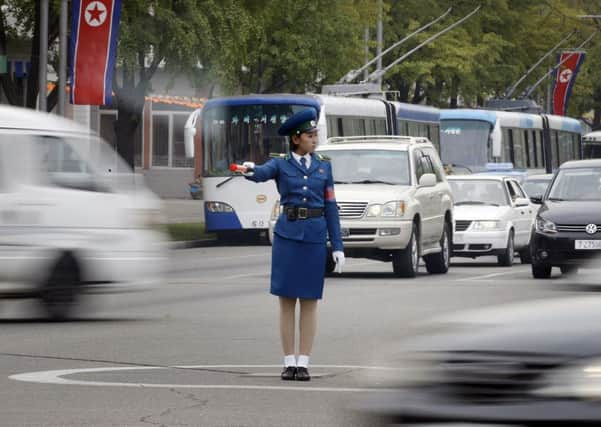North Korean capital faces first traffic jams


So much so, in fact, that a new word has entered the North Korean lexicon – “jam,” as in traffic jam.
Traffic in North Korea’s capital has become visibly heavier over the past year or so, with more trucks, taxis, passenger cars and other vehicles plying the streets and giving the often empty-seeming city of roughly 2.5 million people a much more lively look. To be clear, Los Angeles or Jakarta it is not.
Advertisement
Hide AdAdvertisement
Hide AdEven with more vehicles on the roads, it is unusual to have more than a dozen or so cars waiting behind a red light at any time of day, in any part of the city. At night, the roads remain virtually empty.
Most residents still get around on foot, pedal their way around town on bicycles – Pyongyang also got its first cycling lanes this year – or use public transportation. Unlike any other city in North Korea, Pyongyang has a subway system.
What’s driving the increase in traffic in Pyongyang, like many things about North Korea, is something of a mystery. Obtaining official figures on vehicle numbers in North Korea is virtually impossible given the opaque nature of the government bureaucracy.
But the trend does seem to jibe with an increase in construction going back about five years, which has meant more trucks are on the road to deliver workers and building materials, and the spread of entrepreneurial-style businesses that have the backing of state-run organisations.
Such businesses could be generating the kind of profits needed for their mother organisations and their own managers or workers to use automobiles.
Pyongyang streets continue to be dominated by trolleys, buses, cargo-carrying trucks and the official vehicles of the military, government or party elites. And while the number of taxis has swelled over the past few years, they are still probably in the 1,000-plus range. It remains exceptionally rare for any North Korean to have a car that is strictly for personal use.
Most passenger cars are either overtly from China or brought in from China.